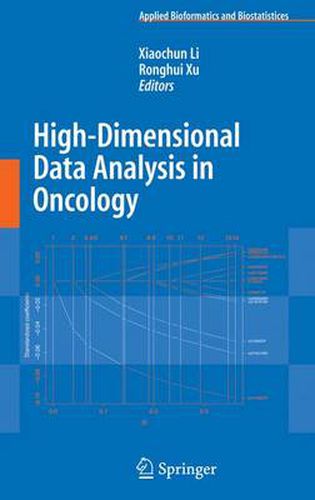Readings Newsletter
Become a Readings Member to make your shopping experience even easier.
Sign in or sign up for free!
You’re not far away from qualifying for FREE standard shipping within Australia
You’ve qualified for FREE standard shipping within Australia
The cart is loading…






This title is printed to order. This book may have been self-published. If so, we cannot guarantee the quality of the content. In the main most books will have gone through the editing process however some may not. We therefore suggest that you be aware of this before ordering this book. If in doubt check either the author or publisher’s details as we are unable to accept any returns unless they are faulty. Please contact us if you have any questions.
Multivariate analysis is a mainstay of statistical tools in the analysis of biomedical data. It concerns with associating data matrices of n rows by p columns, with rows representing samples (or patients) and columns attributes of samples, to some response variables, e.g., patients outcome. Classically, the sample size n is much larger than p, the number of variables. The properties of statistical models have been mostly discussed under the assumption of fixed p and infinite n. The advance of biological sciences and technologies has revolutionized the process of investigations of cancer. The biomedical data collection has become more automatic and more extensive. We are in the era of p as a large fraction of n, and even much larger than n. Take proteomics as an example. Although proteomic techniques have been researched and developed for many decades to identify proteins or peptides uniquely associated with a given disease state, until recently this has been mostly a laborious process, carried out one protein at a time. The advent of high throughput proteome-wide technologies such as liquid chromatography-tandem mass spectroscopy make it possible to generate proteomic signatures that facilitate rapid development of new strategies for proteomics-based detection of disease. This poses new challenges and calls for scalable solutions to the analysis of such high dimensional data. In this volume, we will present the systematic and analytical approaches and strategies from both biostatistics and bioinformatics to the analysis of correlated and high-dimensional data.
$9.00 standard shipping within Australia
FREE standard shipping within Australia for orders over $100.00
Express & International shipping calculated at checkout
This title is printed to order. This book may have been self-published. If so, we cannot guarantee the quality of the content. In the main most books will have gone through the editing process however some may not. We therefore suggest that you be aware of this before ordering this book. If in doubt check either the author or publisher’s details as we are unable to accept any returns unless they are faulty. Please contact us if you have any questions.
Multivariate analysis is a mainstay of statistical tools in the analysis of biomedical data. It concerns with associating data matrices of n rows by p columns, with rows representing samples (or patients) and columns attributes of samples, to some response variables, e.g., patients outcome. Classically, the sample size n is much larger than p, the number of variables. The properties of statistical models have been mostly discussed under the assumption of fixed p and infinite n. The advance of biological sciences and technologies has revolutionized the process of investigations of cancer. The biomedical data collection has become more automatic and more extensive. We are in the era of p as a large fraction of n, and even much larger than n. Take proteomics as an example. Although proteomic techniques have been researched and developed for many decades to identify proteins or peptides uniquely associated with a given disease state, until recently this has been mostly a laborious process, carried out one protein at a time. The advent of high throughput proteome-wide technologies such as liquid chromatography-tandem mass spectroscopy make it possible to generate proteomic signatures that facilitate rapid development of new strategies for proteomics-based detection of disease. This poses new challenges and calls for scalable solutions to the analysis of such high dimensional data. In this volume, we will present the systematic and analytical approaches and strategies from both biostatistics and bioinformatics to the analysis of correlated and high-dimensional data.